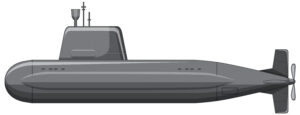
Das Boot; the sea story forgotten
The movie
Released in 1981, “Das Boot” is a critically acclaimed German war film directed by Wolfgang Petersen. Based on Lothar-Günther Buchheim’s novel of the same name, the film unfolds the harrowing experiences of a German U-boat crew during World War II.
Petersen’s unique storytelling approach allows viewers to delve into the tense atmosphere of submarine warfare, presenting a perspective that humanizes the soldiers, while also portraying the disillusionment and brutality inherent in war.
Wolfgang Petersen’s vision was not merely to document the events but to convey the psychological and emotional states of the sailors trapped in their metal confines beneath the turbulent seas. The director faced the challenge of depicting the claustrophobic environment of the U-boat, which was essential in evoking the fear and dread characteristic of naval operations during the war.
Partner Boost
Petersen’s commitment to authenticity is evident in his attention to detail, as he painstakingly recreated the operational aspects of a German submarine, immersing the audience in an educational yet thrilling cinematic experience.
The historical significance of “Das Boot” lies in its balanced portrayal of the German perspective in a war where moral complexities abound. Unlike typical war films of the time that often glorified heroism or demonized the enemy, Petersen presented a nuanced depiction of the human cost of warfare.
The film underscores the challenges of survival against overwhelming odds, driving home the point that the experiences of the U-boat crew were emblematic of broader themes of fear, camaraderie, and existential dread.
“Das Boot” not only reshaped the war film genre but also left an indelible mark on global cinema, continuing to inspire discussions about the complexities of war and humanity.
The Journey Begins: Setting the Stage for Conflict
In Wolfgang Petersen’s acclaimed film, Das Boot, the narrative unfolds aboard the German U-boat U-96, introducing viewers to an intricately woven tapestry of crew dynamics and the complexities of life at sea during World War II.
The early plot centers on the initiation of a perilous mission that serves to entrench the audience in the psychological and physical challenges faced by the submarine’s crew. Each member of U-96 is meticulously developed, providing a glimpse into their respective backgrounds, personalities, and motivations, which ultimately contribute to the collective experience of wartime camaraderie and tension.
The film effectively portrays the tense atmosphere of submarine warfare through its depiction of the crew’s daily routines and interactions. Tensions simmer as orders are received, and the sailors grapple with their fears and camaraderie amidst the ominous backdrop of the Atlantic Ocean. Notably, the relationships between crew members are highlighted, showcasing how bonds forged in the claustrophobic confines of the submarine can give rise to mutual support as well as conflict.
Characters such as the resolute Captain Lehmann-Willenbrock, who epitomizes leadership amidst chaos, and the young and naive crew member, who represents the frailty of innocence lost, stand out as the audience witnesses their development throughout this treacherous journey.
As the narrative progresses, the initial missions undertaken by U-96 are carefully charted, illustrating both the triumphs and harrowing dangers encountered at sea. The crew’s objectives are clear: to disrupt Allied shipping and fulfill their duty as soldiers.
However, the creeping dangers of submarine warfare are palpably felt through tactical decisions and the constant threat of detection by enemy forces. The film masterfully sets the stage for the unfolding drama, emphasizing the challenges of isolation, danger, and the moral dilemmas faced by the crew as they embark on their fateful journey.
Under Pressure: Life Inside the U-Boat
As the crew navigated through treacherous waters, they found themselves in cramped quarters, where personal space was a luxury that few could afford. The confined environment created a palpable tension, as the sailors were under constant pressure from both the enemy and the unforgiving sea.
The claustrophobic atmosphere of the submarine meant that any minor incident could escalate into a full-blown crisis, heightening the urgency of their responsibilities.
Encounters with enemy ships were particularly intense, often requiring the crew to make split-second decisions that could determine their survival. The thrill of underwater combat was mixed with the reality of fear, as the crew faced torpedoes and depth charges while remaining silent to avoid detection.
This ongoing threat not only tested their tactical skills but also exacerbated the psychological strain of their mission. Crew members were acutely aware that death was a constant companion beneath the surface, fueling both their resolve and their anxiety.
Shared experiences forged deep bonds, transforming individuals into a united front against external threats. They learned to rely on one another, creating a network of support that helped mitigate the isolation and despair that often accompanied their dangerous assignments.
Moments of levity and solidarity contrasted sharply with the weight of their wartime existence, highlighting the complexity of human relationships in dire circumstances.
Additionally, the crew battled nature itself, enduring mechanical failures, changing sonar conditions, and volatile underwater weather patterns. These elements posed their own unique challenges, further complicating their missions while demonstrating the unpredictable nature of naval warfare.
Climactic Confrontations and the Aftermath
The climax of Wolfgang Petersen’s “Das Boot” unfolds in a series of intense, gripping confrontations that highlight the harrowing reality of war. As the U-boat, “U-96,” navigates perilous waters, it encounters enemy warships, leading to critical battles that test the resolve and fortitude of its crew.
The film masterfully portrays these high-stakes moments, illustrating not just the technical aspects of submarine warfare, but also the emotional and psychological toll on those involved.
In these climactic sequences, the crew’s deteriorating conditions become increasingly apparent. Exhaustion from constant vigilance, combined with the looming threat of destruction, creates a palpable sense of despair.
The aftermath of these confrontations serves as a poignant reflection on the themes of loss and heroism inherent in wartime experiences. Survivors are left to wrestle with the lives lost and the moral ambiguities of their actions.
The conclusion of “Das Boot” is haunting, echoing with messages about the futility of warfare. The film delivers a sobering commentary on the cost of conflict, as the once-united crew is ultimately fragmented by their traumatic experiences.
Through its rich narrative, “Das Boot” invites viewers to contemplate the enduring impact of war on humanity, evoking empathy and understanding for those who endure its trials.
Share this content:
























